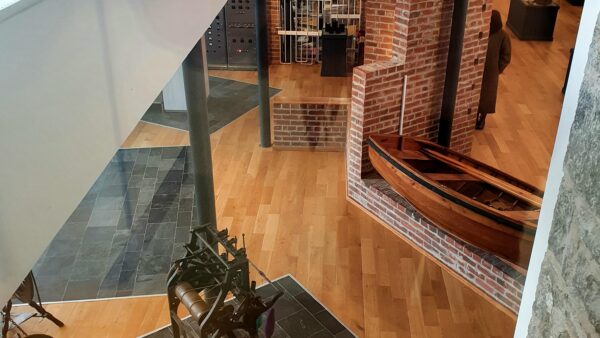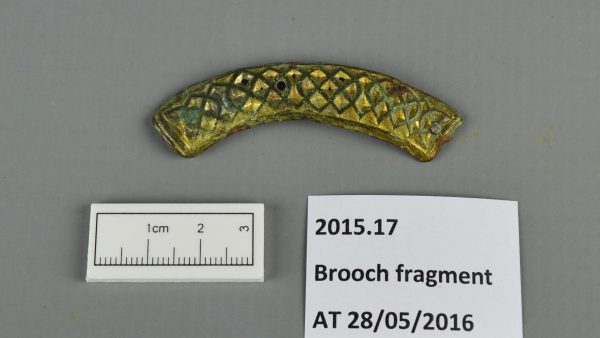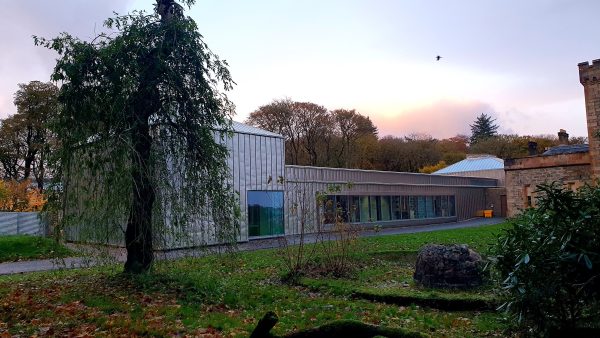
Archaeology assemblages from stack sites: Dunasbroc
Update on the Sònraichte Project by Sam Ferrer, Project Officer
The first archaeology assemblage worked on came from a series of stack sites around Lewis. The STAC project: the Severe Terrain Archaeological Campaign – focused on investigating stack sites of the Isle of Lewis 2003–2005.
The site
The project involved a series of surveys and excavations on many stack sites. Still, only some of them produced the objects we keep today at the museum. So I want to focus on one of them: the excavation at Dunasbroc.
Dunasbroc is near Aird Dell in the township of South Dell, parish of Barvas, on the west coast of Ness. It is a small, steep-sided, conical stack situated close to shore and linked to it via a low rock ramp. A large number of recovered artefacts indicates extensive activity on the site. The material recovered from under the peat spanned the Neolithic to the Norse period.
The finds and what can they tell us about the past
The archaeology assemblage comprises three main types of finds: pottery, stone, and animal bones.
The faunal remains
This very small and fragmented assemblage consisted only of bones from cattle and sheep/goats bones. Most bones were calcined, indicating exposure to high temperatures (around 650°C), a clear sign of human activity. The activities could have been either food preparation or a sign of rubbish disposal! But either way, it confirms the pastoral activity practised in the surrounding areas of Dunasbroc.
The lithics and stone artefacts
The lithics found at Dunasbroc are mainly quartz and flint. Flint is available in small quantities on the local beaches. However, it may have come from imported pebbles, like the orange example in the photos below. The quartz is a more readily available resource from beach pebbles and veins on the Lewisian gneiss, found around most of the island!
The significant aspect of the assemblage is that fractures are relatively fresh, indicating a local stone tool production close to Dunasbroc. Unfortunately, no flint or quartz debitage was recovered, which may indicate tool production elsewhere.
The lithic artefacts date from the Late Neolithic, although leaf-shaped arrowheads are represented throughout the Neolithic period. The arrowhead we have on display in the museum is quite elaborate (it was not an everyday tool but had additional importance) and is likely to have been deposited in a significant location.
There’s also a possible scraper (Fig. 1a and 1b). This primitive technology consisted of working a flint core to produce flakes that are then retouched to give a sharp edge to the scraper. These tools are one of the most common tools found in Prehistory and were used to clean animal hides.
The remaining stone assemblage consisted of larger pebbles. Some were used as hammer tools to work on the lithics, and others were used as rubbers. The pecking damages on the sides of the pebbles show the hammering action. In contrast, the polished surface reflects a rubbing motion.
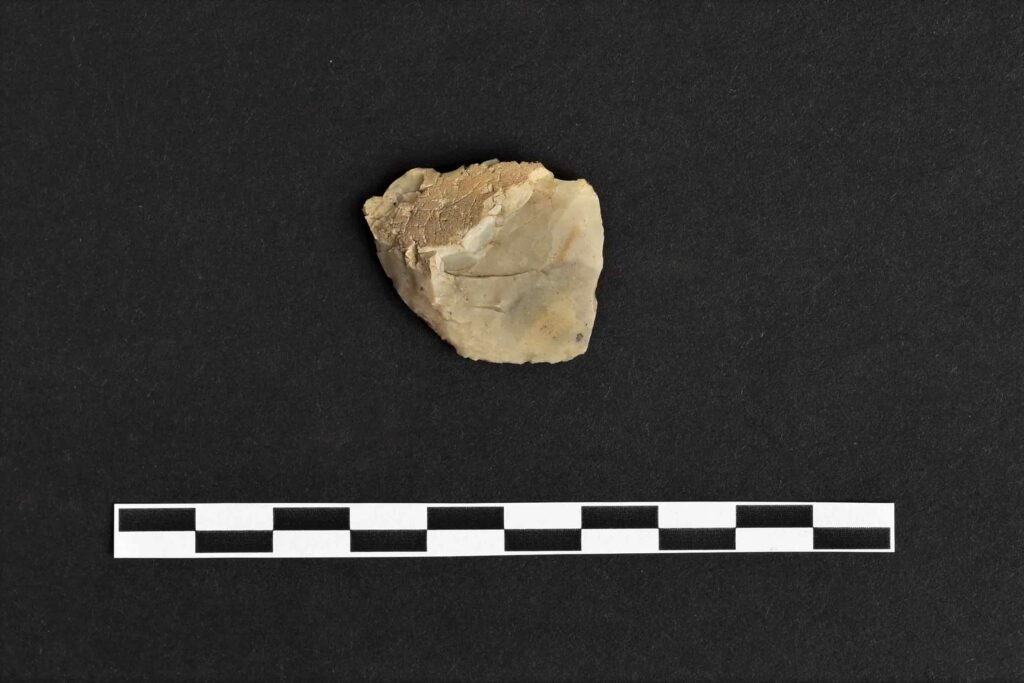

The pottery assemblage
Pottery is generally the most prominent type of artefact recovered from an excavation; at Dunasbroc, more than 400 fragments dating to the Late Neolithic. A smaller selection of Iron Age pottery examples was also recovered from the site.
The examples of Neolithic pottery are known as Hebridean Ware. This pottery is decorated with oblique, parallel grooves arranged in opposing directions. Some examples are also undecorated and burnished. This pottery type is also characterised by its shape. It has a round-based profile, out-turned rims, and horizontal carination or incised lines dividing the vessel.
One vessel (Fig. 2) has a bevelled rim decorated with oblique grooves, followed by grooves on the neck, later carination dividing the vessel, and then more oblique incised lines as decoration. The fabric is coarse and sandy clay and grey and brown.
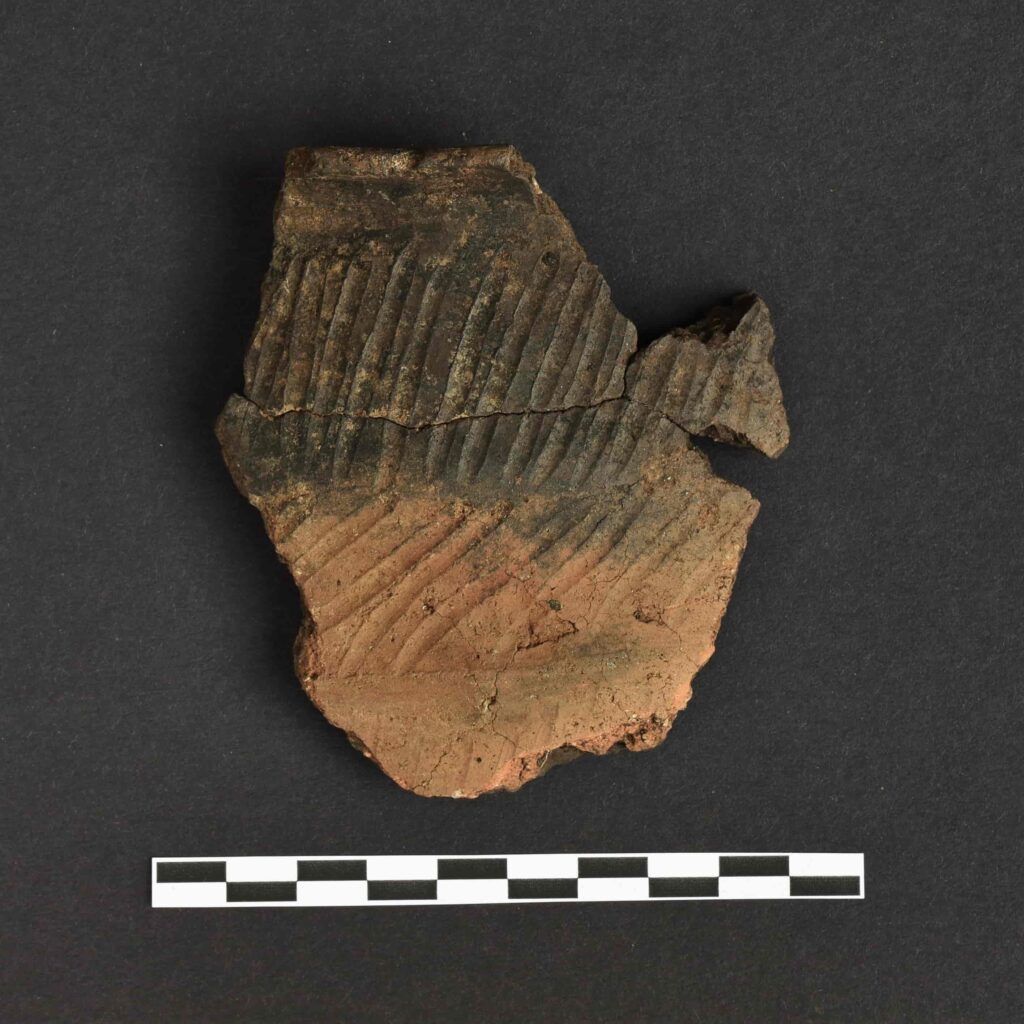


Another vessel (Fig. 3) has more incised lines decoration. The fabric is also coarse sandy clay and grey-coloured. Another example (Fig. 4) shows a bevelled rim decorated with oblique grooves. The exterior is decorated with grooves arranged in alternated vertical and horizontal panels. The fabric is coarse again, sandy clay, grey and brown.
In summary, the small assemblage of Dunasbroc gives us more insight into our Neolithic past. It allows us to try and interpret the activities of the people that lived on these islands so long ago.
The ‘Sònraichte’ Project is funded by Museums Galleries Scotland.
This article was originally posted on our blog on 27/5/21
